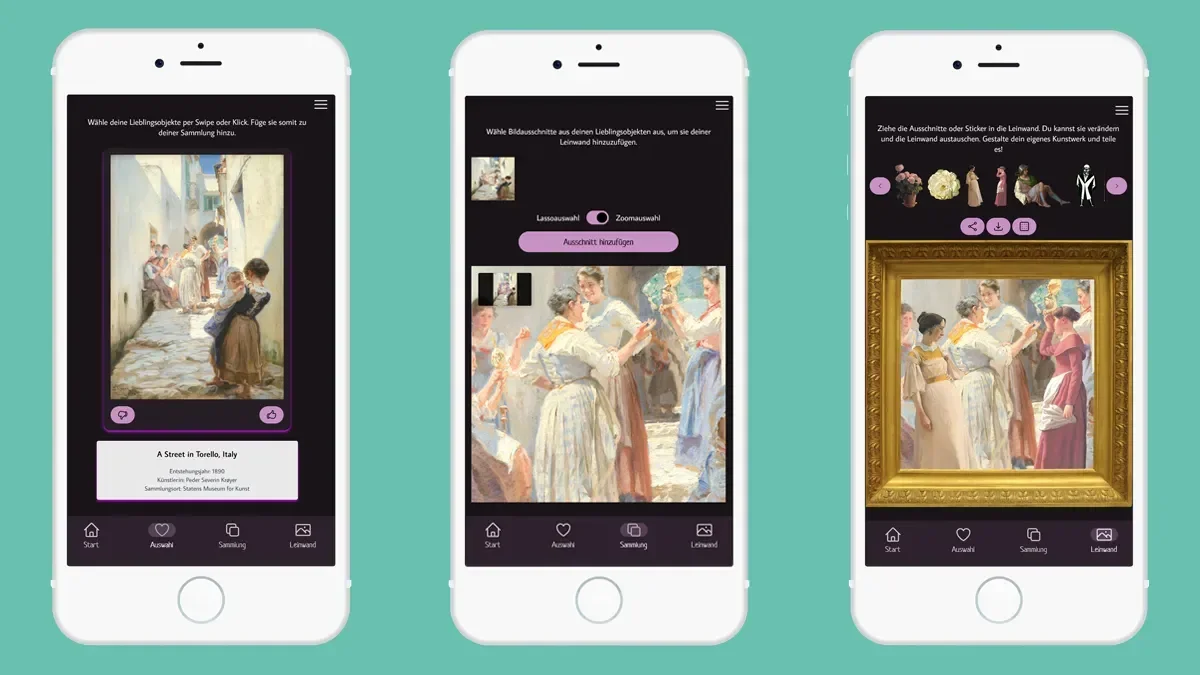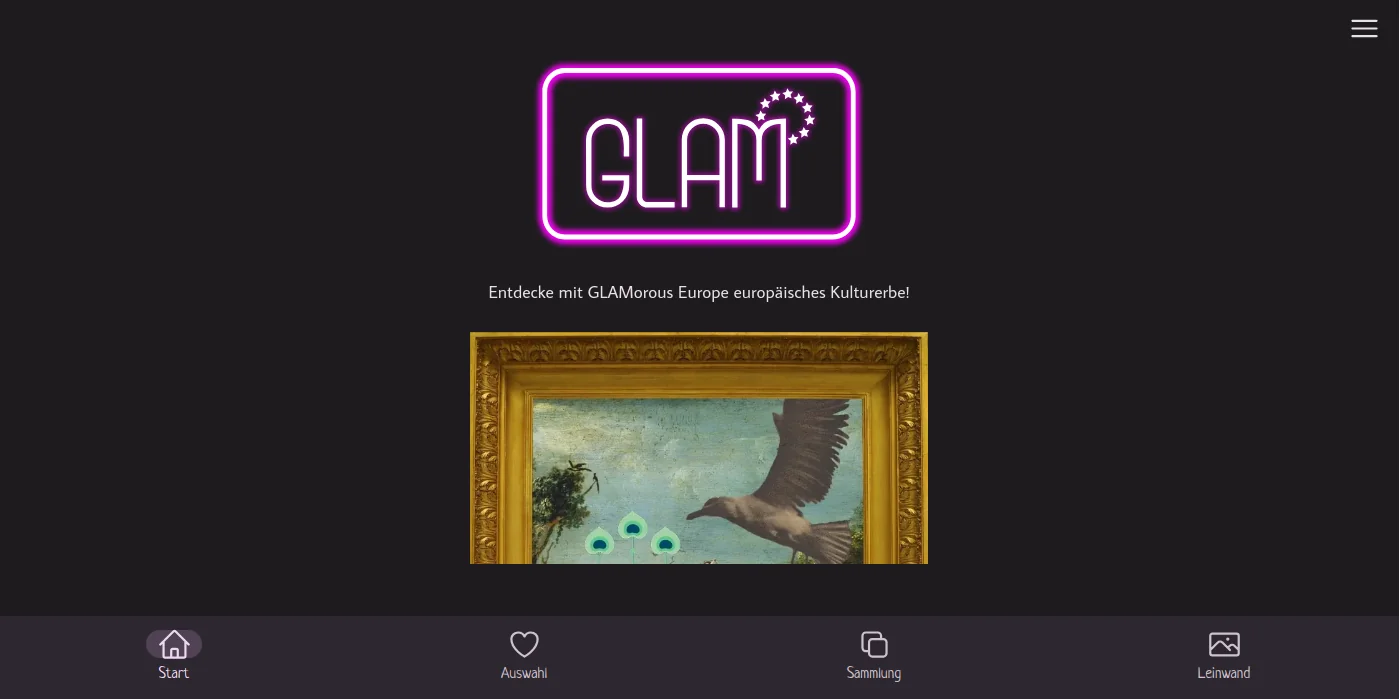GLAM Rockers
Dan Shick

An interview with the creators of GLAMorous Europe
Late last year we had the pleasure of speaking with Anne Mühlich and Gerd Müller about their exciting project, GLAMorous Europe. The two of them form the entire employee roster of their company Digitalwarenkombinat, which specializes in open-source applications for GLAMs (galleries, libraries, archives and museums). They founded the company after distinguishing themselves at the cultural hackathon Coding DaVinci. Our interview with them follows; it was conducted in German, translated by WMDE and edited for length.
Wikimedia Deutschland: How did you get started doing this kind of work?
Anne Mühlich: In 2018/2019 we started making digital projects in the context of Coding DaVinci, the cultural hackathon. Then we decided to start a company so we could start implementing projects that weren’t on a volunteer basis. So we founded Digitalwarenkombinat in 2022, Gerd and I, and since then we’ve been implementing digital projects, ideally ones that have to do with open cultural data, not always of course but by preference, and also open-source projects.
Gerd Müller: After I came in contact with the cultural hackathons back then I found it very, very interesting to do something outside of the business world, fascinating to work with open cultural data, got really involved in it. For a good two years now, since we’ve had our company, we’ve managed to accomplish more projects with GLAM institutions, and of course now GLAMorous Europe. Hopefully lots of people are excited about the project, and we hope a few more people end up learning about it — that’s our great wish for the project.
Back to the open cultural data and the connection to Wikidata — we explicitly said that we want to be able to get data not just from one museum but really from a wide variety of them, in a European context (thus the name), and that it was a great opportunity to find the most meaningful sources of data. And there’s our open-source approach, which we take as often as we can; we find that when we work with open frameworks and tools that we can give something back [to the community].
WMDE: What’s the best way for users to start using GLAMorous Europe?
Gerd: Just dive in.
Anne: Exactly.
Gerd: We all know many sites, even Google search, where the user needs to start off knowing what they’re looking for. We always found that to be difficult in the realm of art and cultural data. So instead we turn it around and say, the data is going to come to us. Then we can decide what we like and what we don’t like. That produces a more coherent picture.
We built GLAMorous Europe so that from the beginning users get data, or artworks, presented to them, and using a Tinder-like swiping action, right or left, they can decide what data they like or don’t like. Little by little they gather pictures into their own collection. They can keep going as long as they want until they have a collection of pictures they like. They can get information about each picture: where did it come from? Who’s the artist?

But they can also work with the pictures themselves. They can zoom in and say, hey, I especially like this little bird in the background, they can cut it right out. They can take out as many snippets as they want from these pictures and put them into their own new personal work of art, play around with backgrounds, with stickers. So they make a new artwork, a new cultural asset, that they can download and share.
Anne: But funnily enough, we also realized during the creation process — and this issue really stuck with us — that the application is only as good as the data it contains, as the degree to which the underlying Wikidata data is well maintained. We finally decided that English was the most important language, because most of the records have English data at least. I started to get a little annoyed, because over and over instead of the title it would show the Q-number [of the Wikidata entry]. So I took one of those carpentry lessons to learn a little about Wikidata, and then I started adding at least the English translations to the pictures we’d added to the application. So it turned out we were able to use our application to find Wikidata entries that weren’t well maintained.
WMDE:: Did you say “carpentry lesson”?
Anne: Yeah. Why they’re called that is another story… but that’s what they call them, introductory courses to things like Wikidata, explicitly intended for people who work in libraries, to empower them and to motivate them to work with Wikidata.
[Editor: Here’s a link to the Wikidata Carpentry Lesson.]
Gerd: It certainly worked for us. That’s how we got started with Wikidata in the first place. Anne and I saw that our application worked better with well maintained open data.
WMDE: Can you edit Wikidata in GLAMorous Europe, or is it just read-only?
Gerd: Currently it’s just read-only. We discussed it with Lydia Pintscher at Wikimania, and it seemed sensible to start with just viewing the data. But editing Wikidata could definitely be a future feature. Good point.
This is software development; it’s always in progress.
Gerd Müller, Digitalwarenkombinat
WMDE: How is the project useful, and for whom? When you imagine someone sitting down and playing with GLAMorous Europe, who is it, or who should it be?
Anne: First of all, a little background. In fall 2023 and spring 2024 we received a six-month grant from the Prototype Fund to develop the prototype for GLAMorous Europe. That means we put in just six months of work, and it’s really just a prototype for which we have a whole lot of expansion plans that we haven’t begun yet.
Fundamentally we see this application as a way of entering the digital collections of museums, without the user needing to know which collection from which institution they want to view. Instead they can focus on the artworks themselves, and then get personalized recommendations as to what else they might like.
Based on that, we’d like to build out the app to provide further information, for example, such as which museums currently have exhibitions running, or where the painting I just saw and liked is being exhibited, so users have the option of coming out of the digital realm back into the analog. It could be an interesting platform where the museums and galleries could make information available.
Gerd: And another aspect: we observe that people don’t go and get information from multiple sites, but they say, “Here I am in this city, I’d really like to see something. What’s available here?” It could be a platform for seeing what’s currently on and deciding what’s interesting, rather than looking at museum A, seeing they have exhibition B, saying “I’ll go there tomorrow”.
WMDE: But that lies in the future.
Gerd: Right. Currently, as Anne described, the app is about interacting with art, looking at pictures and creating your own art. Passive and active.
WMDE: How might your project serve as an example to others? I imagine that maybe a developer sees this project and says, hey, this is just the approach I can learn from, and dives into your GitHub repo. So not just technically, but also in general, how might your project inspire others?
Gerd: On the technical side, if you’re working with data and you say, I want to work with Wikidata, it’s a good entry point for learning how a real-time-stream project works. And on the practical side, in the weeks before we launched GLAMorous Europe, we posted on social media and showed not only what the application can do but also what we learned from the project. It’s our first application using Wikidata, and it doesn’t have to stay that way. This is software development; it’s always in progress.
In closing we asked Anne and Gerd, “What would you like to come next?” Their response was simple: they wish for feedback, and plenty of it. The more feedback they receive on their prototype, the better version 2 will become.
Try out GLAMorous Europe for yourself, and check out its GitHub repository where you may also send them feedback.
Thanks to Anne and Gerd for their fine work!



No comments yet
Leave a comment